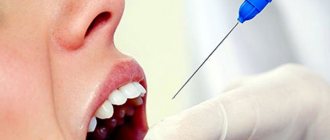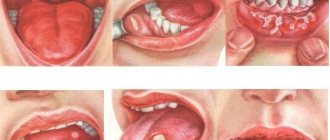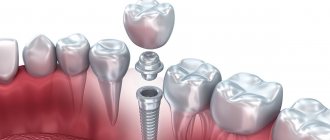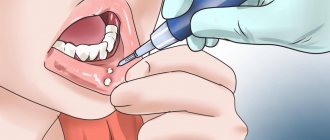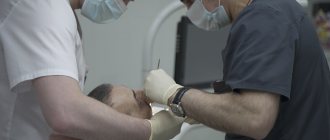|
|
Have you often had toothache? Probably every second person has encountered this problem at least once in their life. At such moments, he has only one desire - to get rid of her as quickly as possible. Various means are used, ranging from medications to traditional methods. After a few minutes, the pain goes away and the person feels much better. Often it is at this stage that his life-saving actions stop. Many people forget that pain is the first sign of the development of a pathological process in the oral cavity. Moreover, if it is accompanied by an increase in body temperature and swelling of the gums. All of these symptoms indicate a dental disease called periostitis or otherwise flux.
Anatomy of the lower leg
The leg and ankle are a complex mechanical structure, the correct operation of which ensures full motor activity of the whole organism. There are three bones in the ankle joint. Their interaction must be correct, in combination with the functions of connective tissue elements, ligaments, muscles and tendons.
The foot has 20 bones, 30 joints, 100 muscles, ligaments and tendons. Their work must happen correctly and harmoniously. When at least one function of the general mechanism is disrupted, certain pathological processes begin to develop. They are accompanied by pain in the lower legs.
The shin is the part of the lower limb that connects the knee to the heel. The tibia contains the tibia and fibula, to which the kneecap is attached. Near the heel, these two bones merge into the anterior and posterior malleolus. There are muscles throughout all parts of the lower leg. With their help, the foot bends, extends and rotates. In most cases, the appearance of pain in the lower leg is not associated with serious pathologies. However, the help of a doctor is mandatory.
Prevention and relapse prevention
For preventive purposes, it is necessary to strengthen the stabilizing muscles of the foot with non-impact loading.
– If you ride the subway, you can hold the handrail, slightly raise one leg and ride 1-2 stations on one leg and another 1-2 stations on the other leg. It is important to start the exercise after the train has accelerated and do not raise the second leg high from the floor so as not to fall during braking. The metro is generally an excellent trainer for stabilizer muscles.
– You can train the muscles by performing amplitude rotations of the ankle clockwise and counterclockwise with a weight in the area of the instep weighing from 500g to 1kg 40 times in each direction, keeping the foot suspended. If you do such exercises every day for 2 months, this will greatly strengthen your ankle and prevent not only inflammation of the periosteum, but also a number of other running injuries.
– Special balancing pillows are also used, exercises on which for 5-10 minutes a day give results within 3-4 weeks.
Another part of prevention is good stretching of the ankle and stabilizer muscles, as well as massaging them after high loads.
Execution: stand on the edge of a step or curb, remaining on the support, with the inside of your foot lower your heel as far as possible down and out. When performing the stretch, bend your knee slightly to increase the stretch in your calf muscles and reduce strain in your hamstrings and calf muscles. Hold the position for 40 seconds. Can be repeated 5-7 times.
For prevention and treatment, shoes with protection against overpronation are also used (selected by specialists, preferably using video recording on a treadmill) and/or special running individual insoles.
Attention! Do not combine insoles and specialized shoes without the advice of a specialist, since the anti-overpronation mechanisms built into the insole and the sneaker, when superimposed on each other, can have the opposite effect, completely extinguish pronation, or even put the foot in the opposite position!
What structures can become inflamed in the lower leg?
Pain in the lower leg and ankle occurs suddenly after an injury - bruise, sprain, fracture, dislocation. It can also be caused by a chronic illness. The following structures can become inflamed in the lower leg:
- Ligaments. They may become inflamed or stretched. When a tendon or muscle is sprained, severe tension occurs. Severe trauma also causes muscle or tendon rupture.
- Joints. Arthritis or arthrosis is a common pathological condition that affects the joints and is accompanied by pain. Ankle pain also often accompanies the development of rheumatoid arthritis.
- Tendons. The most common inflammatory tendon pathology is tendonitis. Also, with constant friction of the tendons and a deficiency of interarticular fluid, bursitis develops. This is accompanied by irritation and discomfort.
- Bones. After an injury, the integrity of the bone is often compromised. This is a fracture or crack. In this case, it is very important to visit a doctor as soon as possible. Only through timely and correct treatment will the bone heal and there will be no consequences of the injury.
- Tarsal tunnel syndrome. It develops when the tarsal tunnel is not pinched. This is a nerve located along the entire length of the lower leg.
- Arch. There are tendons in the leg that work synchronously. This is how the arch is formed. When the tendons are connected correctly, a regular and symmetrical arch is formed. If they are connected asymmetrically, an arch of a small size is formed or it is completely absent. With this condition, discomfort or pain occurs.
- Connective tissue. Connective tissue elements are located on the bottom of the foot. When they become inflamed, it is called plantar fasciitis. This happens when wearing incorrectly selected shoes, too narrow and uncomfortable, or with poor posture.
Fibrous periostitis
It develops gradually and is chronic. It occurs under the influence of irritations lasting for years and is manifested by a callous fibrous thickening of the periosteum, tightly fused to the bone. is observed on the tibia in cases of chronic leg ulcers, bone necrosis, chronic inflammation of the joints, etc. Significant development of fibrous tissue can lead to superficial bone destruction. In some cases, with a long duration of the process, new bone formation is observed. After eliminating the stimulus, a reverse development of the process is usually observed.
Causes of shin pain
After physical effort or minor injury, the pain usually goes away on its own and does not require specialist intervention. If the pain does not go away within 2-3 days, you need to visit an orthopedist or traumatologist who will help establish a diagnosis and prescribe treatment.
One of the causes of pain is flat feet. With this pathology, the shape of the foot is flattened and irregular. Its functioning is impaired, and the shock-absorbing function of the foot is not fulfilled. As a result, muscles and ligaments experience additional stress, and fatigue appears after walking. In this case, you need to use orthopedic shoes or special insoles.
Varicose veins can cause discomfort in the lower leg. This disease is accompanied by stagnation of blood in the vessels. Its microcirculation is disrupted, the walls of blood vessels are greatly stretched. With venous stagnation, discomfort and pain occur.
To reduce the severity of discomfort, it is recommended to wear special compression products. Vein thrombosis and obliterating atherosclerosis are also diseases of the vascular system. Their development is accompanied by circulatory disorders, blood stagnation, and the formation of atherosclerotic plaques.
Other causes of pain in the lower leg include:
- decrease in the concentration of magnesium, calcium, potassium in the blood. Long-term use of diuretics can provoke such conditions;
- improper use of statins, a side effect is deformation of muscle tissue;
- spasms in muscle tissue after prolonged physical activity;
- ruptures or cracks in the tendons after an injury;
- broken bones, cracked joints;
- meniscal deformation, previous trauma;
- blockage of blood vessels;
- inflammatory process in tendons;
- atherosclerotic disease of the circulatory system with the formation of cholesterol plaques, deterioration of blood outflow;
- infectious processes in tissues;
- damage to nerve fibers, ruptures, sprains or trauma to fibers;
- severe injury or muscle strain, which is accompanied by the development of trap syndrome, compression of the lower leg;
- development of muscle contracture under severe tension or loads;
- inflammatory process in the periosteum of the tibia;
- tears of various types in the muscular system of the lower leg;
- tears of the popliteal ligaments;
- inflammatory process in the kneecap, in the tuberous surface;
- neoplasms of a benign or malignant nature in any part of the leg;
- the use of glucocorticosteroid drugs, in this case pain is a side effect;
- compression of muscle tissue or neurons in tissue.
People who smoke more than two packs of cigarettes a day often experience pain in the lower leg. After quitting the bad habit, the pain of smokers stops on its own. This may be a consequence of stress on the vascular system.
Signs of inflammation.
As soon as an infection gets into the gum, an inflammatory process begins in it, it swells and increases in volume. After some time, pathogenic bacteria spread to nearby soft tissues, as a result of which the cheeks and lip begin to swell. There may also be an increase in body temperature, a deterioration in general condition, and the occurrence of pain in the ears and temples. All these signs indicate a problem that requires immediate correction. There are several stages of periostitis:
Acute serous form.
Symptoms appear 1-3 days after the gums become infected. There is redness and swelling of the mucous membrane, mostly imperceptible changes occur.
Acute purulent.
All previous manifestations of the disease remain, and in addition to them, the patient begins to be bothered by acute pain, due to which the movement of the jaw is limited. Pus accumulates in periodontal tissues, which can open on its own, i.e. rupture and leak out. When biting a damaged tooth, unpleasant sensations appear, and it also becomes mobile.
Acute diffuse.
Loss of appetite, deterioration in health, lethargy. If the abscess has not opened, it provokes the formation of severe edema at the site of damage to the periosteum. Flux in the acute diffuse stage is accompanied by throbbing, unbearable pain that can radiate (give) to the head: temples, ears, neck.
Chronic form.
Sluggish course of the disease with periodic exacerbations. The patient has slight facial asymmetry and inflammation of the lymph nodes. On the x-ray you can see thickening of the bone tissue, due to sharply changed dimensions of the periosteum.
Treatment of lower leg pain due to various diseases
Depending on the established diagnosis, doctors draw up a treatment algorithm. Often, pain in the lower leg is caused by increased physical activity and prolonged walking. Therefore, in most cases, after rest, all unpleasant symptoms are eliminated.
To restore the full function of muscles, ligaments, tendons, you will need medication and physiotherapeutic treatment followed by recovery - massages, therapeutic exercises, manual therapy.
To reduce the load on the affected limb, it is necessary to wear special devices. To prevent foot pathologies, doctors prescribe orthopedic shoes or insoles. Doctors can also prescribe anti-inflammatory drugs, muscle relaxants, and chondroprotectors. In severe cases, surgical treatment may be necessary.
Treatment of the disease
The therapeutic regimen is always selected on an individual basis. If the disease has recently developed, it is usually possible to manage with conservative methods. The patient is prescribed:
- anti-inflammatory;
- antibiotics;
- antiseptics.
Sanitation of the oral cavity is mandatory. If there are indications for removing destroyed units, they are pulled out and replaced with dental prostheses. Physiotherapy helps speed up the healing process.
In advanced cases, surgical treatment is performed. In this case, the treatment plan looks something like this:
- The doctor examines the condition of the mouth and determines the cause of the disease.
- A local anesthetic is injected into the affected area. As soon as it takes effect, an incision is made in the gum with the abscess.
- The opened lesion is cleaned of purulent exudate and washed. If necessary, install a drainage tube. It is necessary so that necrotic masses do not again begin to accumulate in the existing cavity.
- The doctor treats the tooth, if it is possible to save it. Fills the canals and installs a seal. If the unit cannot be cured because the roots are severely damaged, removal is carried out.
- The patient is prescribed antibiotics, painkillers, and anti-inflammatory drugs.
It is important that after treatment the patient comes for follow-up examinations. They are needed to prevent relapse of pathology and create optimal conditions for rapid regeneration.
MBST therapy
With the help of magnetic radiation supplied by the MBST device, the following goals can be achieved:
- improve blood circulation and vascular condition;
- get rid of pain;
- prevent further development of the pathological process.
You can sign up for ankle treatment in Moscow at ArthroMedCenter. A completed course of MBST therapy is a good prevention of arthritis, arthrosis, atherosclerosis, and osteoporosis. After the procedure, blood circulation improves and the walls of blood vessels are strengthened. When undergoing MBST therapy, tissues begin to better absorb calcium, and damage and microcracks are restored faster.
Thanks to an integrated approach to treatment and prevention, you can get rid of unpleasant symptoms and prevent further development of diseases.
What is periosteum
Other names for this dense connecting structure are periosteum, pericranium. This is a dense shell that covers the outside of all the jaw bones. It is not present only at the articular ends.
It serves as a connecting link between the bone and its surrounding formations. Participates in the processes of bone formation. Responsible for the enlargement of bones in childhood and adolescence, making the healing of fractures possible.
The pericranium includes two layers:
- outer;
- interior.
The first is formed by connective fibrous tissue. It has many nerve endings, lymphatic and blood vessels. The internal one consists of tendons and ligaments. It is needed for the tightest fit of the inner layers to the bone.
The peculiarity of the pericranium is that it is easily involved in various kinds of inflammatory processes. As soon as you start a diseased unit or affected periodontal formations, it immediately becomes inflamed. Most often, inflammation of the bone tissue of the tooth causes the development of periostitis.
In what cases is specialist help for pain urgently needed?
You should not delay contacting a doctor under the following symptoms and circumstances:
- the ankle joint hurts and is very swollen, because of this you are unable to put on shoes;
- due to intense pain you cannot lean on your leg;
- noticed instability of the ankle, loosening (occurs with complete or partial rupture of the ligaments);
- pain occurs when you stand;
- the soreness is felt not only in the muscles, but also deep in the ankle.
Severe pain in the ankle is not a reason to try traditional medicine
How to deal with ankle pain
You shouldn’t fight this joint pain on your own: it’s better to get diagnosed and follow the recommendations of an orthopedist or rheumatologist. The specialist will conduct a physiological examination and collect anamnesis, and prescribe stress tests of the foot. During the examination, the condition and functioning of the nerve roots will also be assessed. If necessary, the patient will be sent for an X-ray or MRI.
The treatment regimen for osteoarthritis is fundamentally different from the treatment for gout or recovery from injury.
In case of injury, the doctor’s actions depend on the type of injury:
- in case of a fracture, a plaster cast is applied to the damaged area, but before this, surgical displacement of the bones is sometimes performed;
- the dislocation is first reduced, then an orthosis with rigid lateral parts or a plaster cast is applied to prevent swelling and properly fix the leg;
- When sprained, soft orthoses or fixing bandages are relevant.
For ankle injuries, it is important to reduce the load on the limb
Causes of tire splint
- Weak and clogged foot stabilizer muscles;
- high impact load.
High impact loads may be caused by:
- overweight;
- structural features of the foot - hyperpronation, high rigid arch of the foot;
- shoes with low cushioning;
- hard surface for running;
- hard contact with the surface (excessively high tension of the feet upon contact);
- acceleration or running down an inclined surface;
- running on uneven surfaces.
Moreover, you can clog up your muscles one day, for example, during a workout in the park, and damage the periosteum during the next workout while running on your usual hard surface, simply by shortening the muscles.
How to quickly help yourself in case of an ankle injury
If you feel severe pain in your foot due to injury or severe mechanical stress, do the following:
- place your foot on a small hill;
- remain in this position until the pain becomes less intense;
- apply a cold compress of ice wrapped in thick cloth for 20 minutes;
- eliminate the load on the leg, swaddle the injured foot tightly with a bandage (relevant during the first two days);
- As soon as possible, go to the doctor.
A cold compress of ice helps in the first hours after injury



